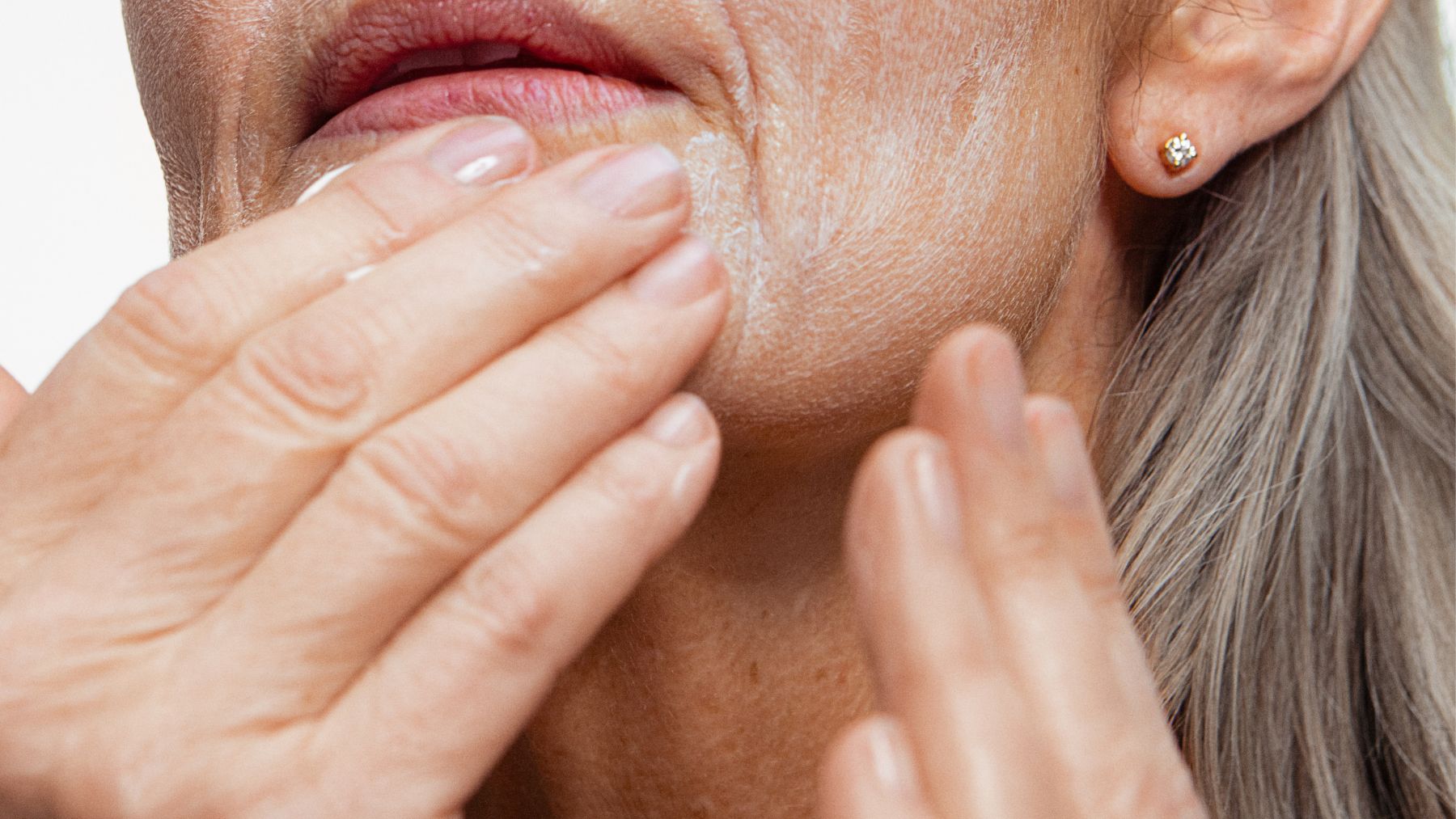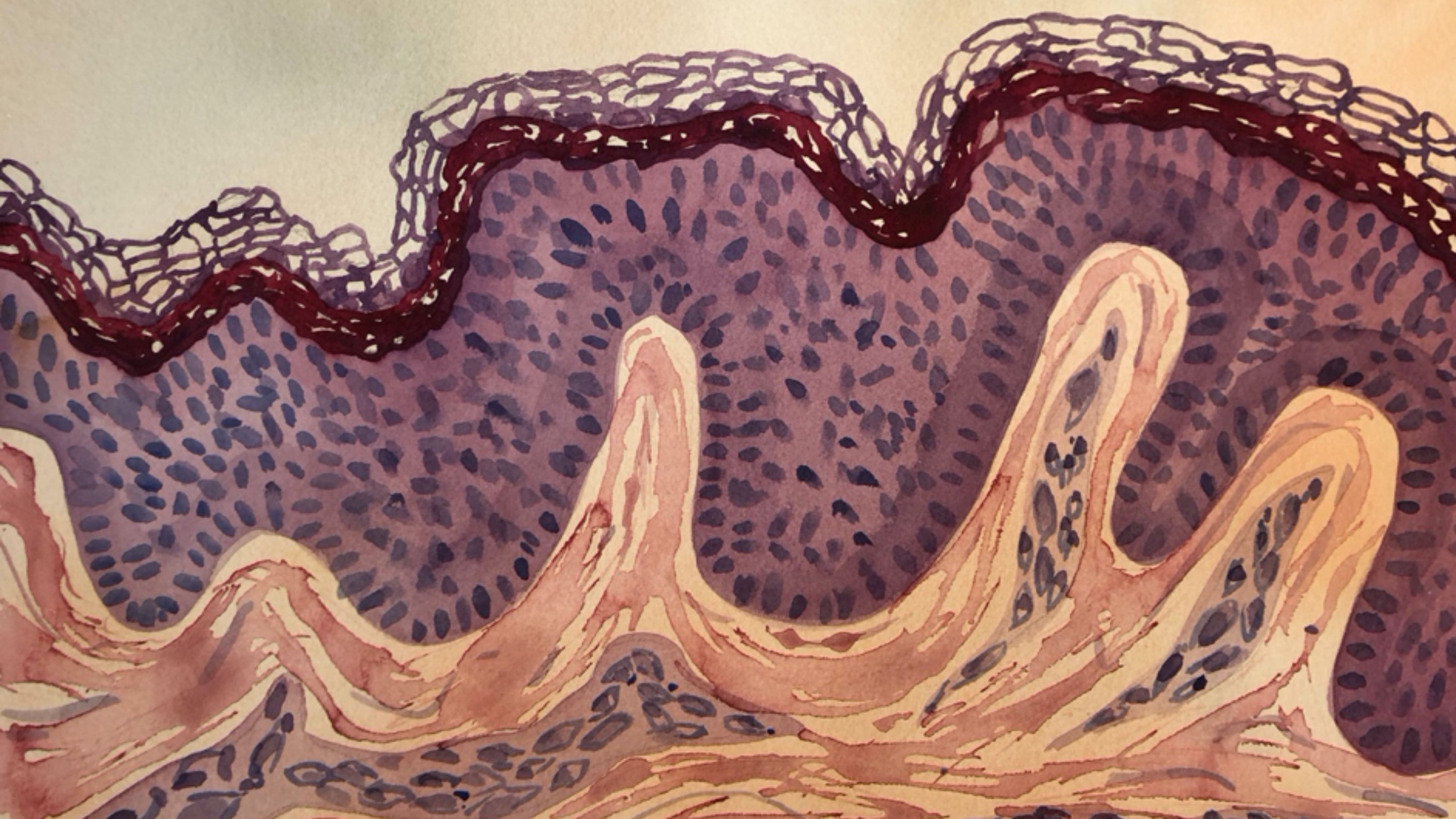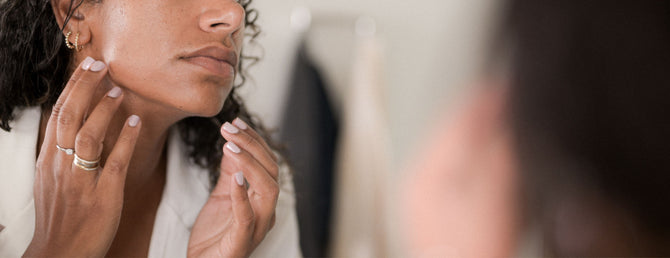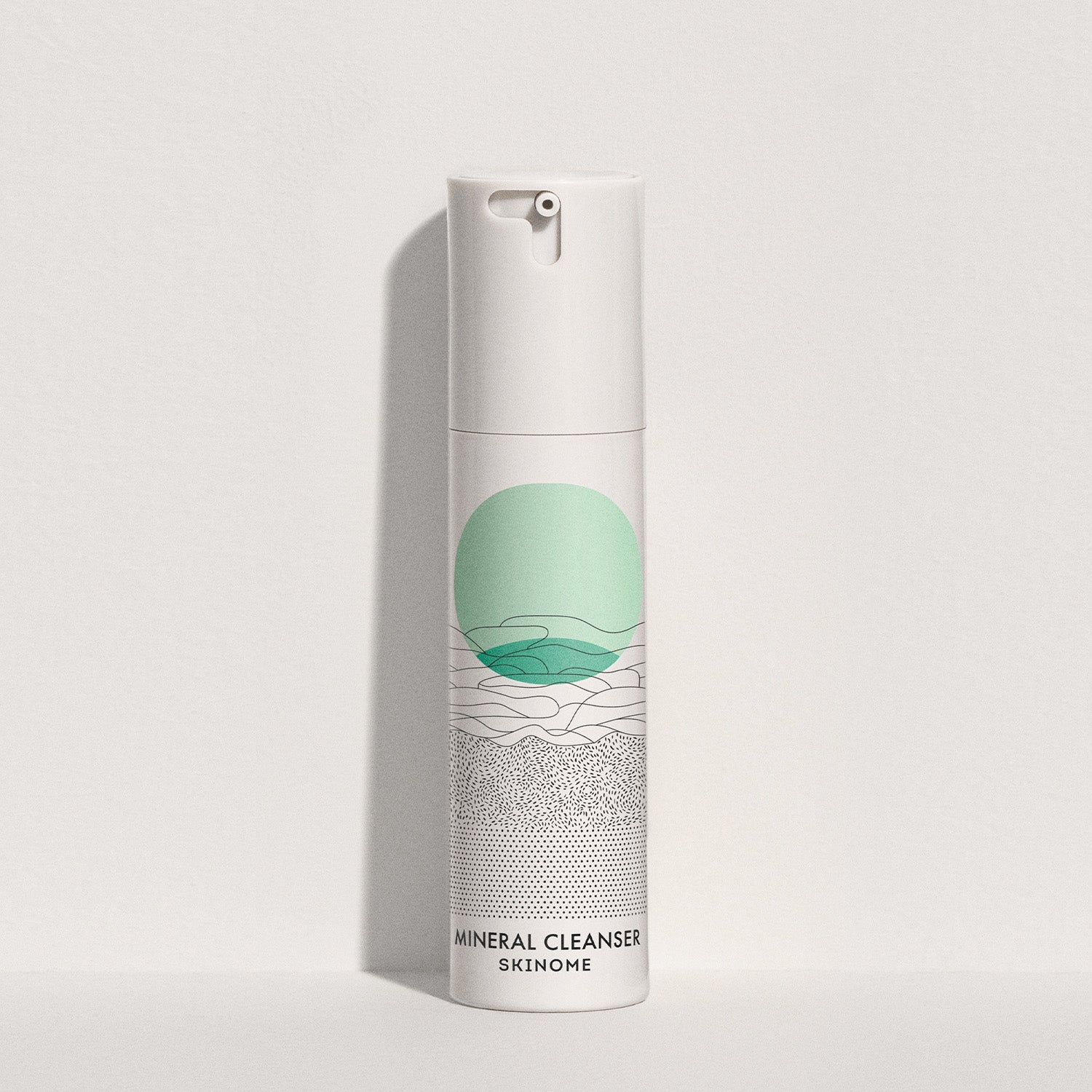
In addition to skin losing elasticity as we age, our skin’s oil production also decreases, often leading to drier skin. Our pigment cells are also affected, which can result in uneven skin tone and age spots. These changes can be challenging, and an entire industry is focused on getting us to fight the signs of aging. But remember, getting older is actually a luxury – a privilege that not everyone gets to experience. At the same time, most of us want to feel and look as good as possible, regardless of age, and there are many factors we can influence when it comes to our skin.
Some people notice the skin change more than others and this is simply due to what we usually call intrinsic (internal) factors and extrinsic (external) factors.
The intrinsic factors are about genetics and the extrinsic factors are about how we treat our skin throughout life.

One of the cornerstones of Skinome’s approach to skin and how we best care for it is based on our knowledge of our skin microbiome, which consists of the good bacteria, viruses and fungi that live on our skin and are the foundation of our skin health. Incredibly exciting is that there also seems to be a connection between skin health when it comes to skin aging and our microbiome. More and more studies are showing that skin aging is related to changes in the skin microbiome (our skin flora).
Professor Elisabeth Grice and her team at the University of Pennsylvania made the interesting discovery in 2019 that a certain type of bacteria is linked to skin rejuvenation . Many of the skin's bacteria are important "factories" that produce nutrients, vitamins and lipids that are crucial for our skin health, and we know that many of these processes decrease as the skin ages.
Professor Grice and his team discovered that bacteria associated with younger skin contribute to and are important for lipid and ceramide production. Previous studies show that lipid and ceramide concentrations in the skin decrease by up to 30% during the aging process. Grice's study explains that the bacteria that help with ceramide production in the skin decrease as we age.

In another recent study from 2022, American and Chinese researchers show that it is the skin bacterium S. epidermidis that produces ceramides in the skin and thus accounts for an important part of the skin's barrier function. The skin barrier is the outermost layer of the skin that is important for keeping out dirt, pollutants and bad bacteria and that "locks in" moisture in the skin, and an intact skin barrier is crucial for our skin health.
S. epidermidis is a bacterium that we and others are specifically looking at whether it can be added to the skin through skin cream to reduce the rate of the aging process. Grice and his team also saw that there are bacteria that are also responsible for pigmentation, skin strength, elasticity and wrinkle formation.
In another new study, also from 2022, the skin was compared in different age groups, women between 19–28 years old and 60–63 years old. The study saw, among other things, that the younger women had more lactobacilli (lactic acid bacteria) in their skin compared to the older women. This is of course interesting considering probiotics in skin care, as lactic acid bacteria is something we can include in skin care.
Scientists are currently studying whether we can add the bacteria that we have more of when we are young to counteract and slow down skin aging. We already know that our skin microbiome is incredibly important for our overall skin health, but it is very interesting that more scientific studies are now also focusing on understanding the connection between skin aging and our microbiome.

Microbiome-supporting skincare
In our own studies in collaboration with Linköping University, we have seen that the diversity of bacteria in the skin increases when switching to preservative-free skin care. This happened after one month of use, which led to less irritated and red skin but also smoother skin. The conclusion is that a balanced microbiome, which is not disturbed by preservatives from skin care, among other things, leads to better skin health with improved skin tone and smoother skin.
Probiotics in skin care
A relatively new area of skincare focuses on including live bacteria, known as probiotics, in the product. But what many skincare consumers don’t know is that it is very rare to find “real” probiotics in skincare, i.e. bacteria that are alive, even if it says probiotics on the packaging. Only 1% of all skincare products marketed as probiotics actually contain live bacteria. Instead, they are ingredients such as pre- and postbiotics, which are not live bacteria. We think this is misleading, but unfortunately there is no regulatory framework that regulates how to communicate about different types of probiotics.
Live bacteria can only survive in completely water-free formulations (i.e. in oil solutions). Currently, there are only a handful of products on the European market that deliver on their promises and contain live bacteria.

Do probiotics work and are there benefits to applying live bacteria to the skin?
Yes, more and more studies are pointing in this direction. Our own studies also show positive effects such as increased hydration, better texture, more radiance and fewer fine lines and wrinkles after using live lactic acid bacteria on the skin.
Interest in our concentrate with live lactic acid bacteria, Probiotic Concentrate , has been skyrocketing and we have been invited as speakers to several scientific congresses to talk about our clinical studies and the effect of the product on the skin since its launch in 2022.

Aging and longevity conference
Johanna Gillbro, Berlin, 2024
Skin aging and challenges
Ulf Åkerström, Lisbon, 2023
10th Microbiome & Probiotic R&D & Business Collaboration Forum
Johanna Gillbro, Rotterdam, 2023
9th Microbiome /Probiotics /Prebiotics /Skin Microbiome /Cosmeceuticals Congress
Johanna Gillbro, Rotterdam, 2023
8th Microbiome & Probiotic R&D & Business Collaboration Forum
Ulf Åkerström, The Hague, 2022
Kim, HJ et al. Segregation of age-related skin microbiome characteristics by functionality. Sci. Rope. (2019) doi:10.1038/s41598-019-53266-3.
Shibagaki, N. et al. Aging-related changes in the diversity of women's skin microbiomes associated with oral bacteria. Sci. Rope. (2017) doi:10.1038/s41598-017-10834-9.
Hye-Jin Kim, Han Na Oh, Taehun Park, Hanbyul Kim, Hyun Gee Lee, WJS Aged related human skin microbiome and mycobiome in Korean women. Sci. Rope. (2022).
Yue Zheng 1, Rachelle L Hunt 1, Amer E Villaruz 1, Emilie L Fisher 1, Ryan Liu 1, Qian Liu 2, Gordon YC Cheung 1, Min Li 2, MO 3. Commensal Staphylococcus epidermidis contributes to skin barrier homeostasis by generating protective ceramides. Cell Host Microbe (2022).
Marhuenda-Muñoz M Hurtado-Barroso S, T.-RAL-RR A review of factors that affect carotenoid concentrations in human plasma differences between Mediterranean and Northern diets. Eur J Clin Nutr. (2018).
Danby, FW Nutrition and aging skin: Sugar and glycation. Clin. Dermatol. (2010) doi:10.1016/j.clindermatol.2010.03.018.


















